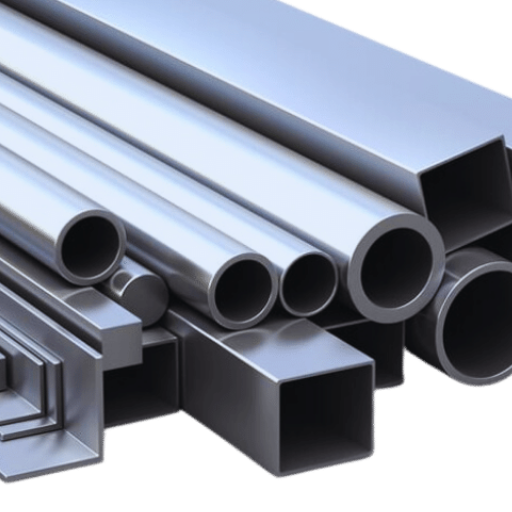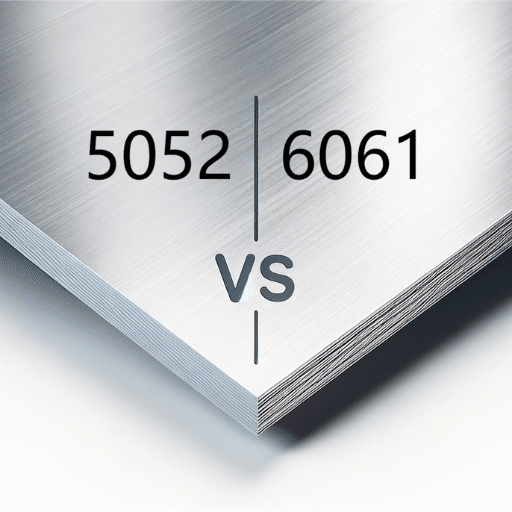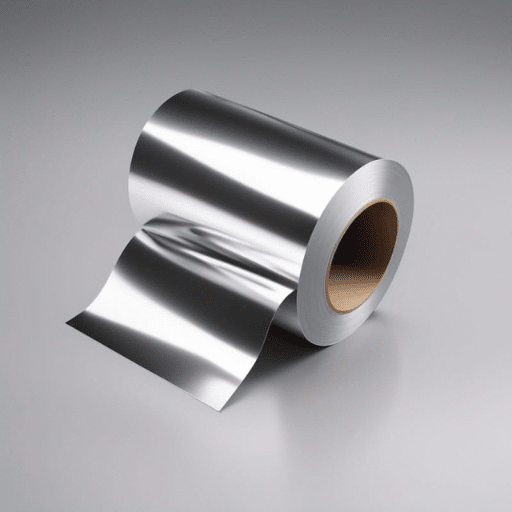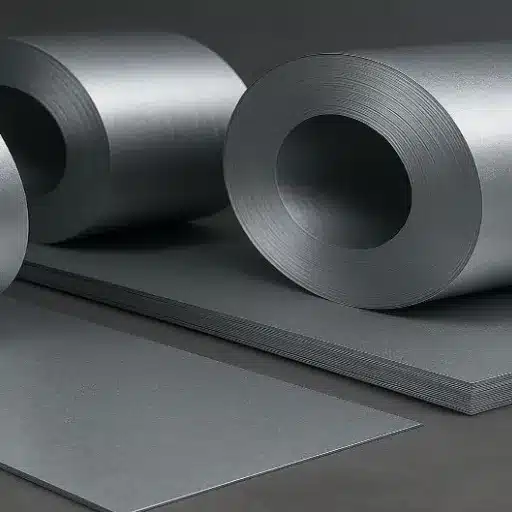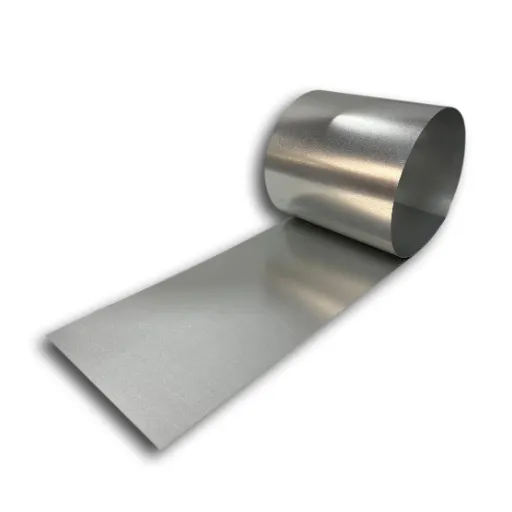4140 alloy steel is a versatile and highly sought-after material across numerous industries, renowned for its exceptional blend of strength, toughness, and resistance to wear. Whether you are designing heavy-duty machinery, automotive components, or precision tools, understanding the unique characteristics of this alloy can provide a significant advantage in material selection and application. But what exactly sets 4140 alloy steel apart? This article explores its composition, properties, and diverse range of uses, equipping you with the technical knowledge to make informed decisions in engineering and manufacturing processes. From its chemical makeup to real-world applications, we’ll break down everything you need to know about this indispensable material.
Chemical Composition of 4140 Steel
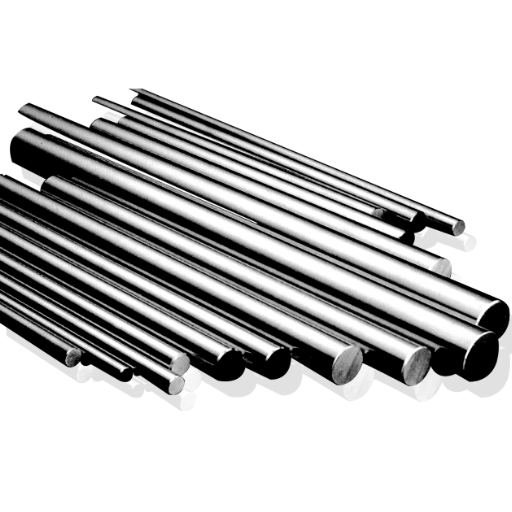
Elements in AISI 4140 Alloy Steel
AISI 4140 is a versatile and highly strong alloy steel that obtains its attractive mechanical properties from the interactions of its elemental components. Carbon, chromium, molybdenum, manganese, silicon, and iron constitute the primary components of this alloy. Its carbon content is usually 0.38-0.43%, imparting hardness and strength. Chromium occurs between 0.8 and 1.1% and it lends a certain amount of resistance to wear and corrosion. The molybdenum content is roughly 0.15-0.25% and it increases toughness and high-temperature strength, making this element very critical in a high-performing situation.
Manganese, which is 0.75-1.0% by composition, aids hardenability and tensile strength; silicon, which ranges from 0.15-0.35% increases flexibility and resistance to bending; whereas iron makes up the majority of the composition, serving as a matrix to sandwich all others. These elements are combined meticulously to optimize performance so that they provide a balance of strength, ductility, and wear resistance for industrial and engineering applications.
With the correct combinations, the alloy is ideal for use in gears, crankshafts, and heavy-duty machinery and structural components. The properties have been engineered to provide the means for resisting stress, heat, and wear under multiple mechanical and manufacturing applications. An understanding of these elements opens an insight into the complexity of its superior mechanical and dimensional stability.
Carbon Content and Its Impact
The carbon content of AISI 4140 steel is imperative for defining its mechanical properties and performance. With a range of 0.38-0.43% carbon, the alloy thus gains the best balance of hardness, strength, and ductility. Further carbon will increase hardness and wear resistance, which makes the material suitable for use in high-stress areas. But with precise control of carbon levels, it can maintain adequate levels of toughness and machinability required for precision engineering.
In conjunction with heat treatment processes such as quenching and tempering, control is maintained over carbon levels so that the material can be treated towards a microstructure with desired properties, like enhanced toughness or deformation resistance under applied load. Much of AISI 4140’s versatility for industrial applications arises from this particular carbon composition, which maximizes the performance of the steel within those fields.
Furthermore, the carbon content directly influences the steel’s weldability and its behavior in stress-relief procedures. Higher carbon content will decrease weldability; however, if the carbon is contained within the stipulated range, the risk of cracking during welding is reduced considerably. The fine balance between carbon content and the other alloying elements emphasizes how critical it is to recognize the contribution carbon makes to the AISI 4140 steel’s overall efficacy in demanding industrial applications.
Role of Chromium and Molybdenum
Chromium and molybdenum define the mechanical properties and performance of AISI 4140 steel. The concentration of chromium, ranging from 0.80-1.10% enhances hardenability, corrosion resistance, and abrasion resistance in the material. This element helps form a strongly adhered oxide layer on the surface of steel that limits environmental degradation and hence contributes toward a longer service life of components subjected to operating conditions that are quite harsh.
The alloying element molybdenum, usually 0.15-0.25%, improves hardenability further and has a considerable onto the strength of steel at elevated temperatures. Furthermore, it tends to minimize the risk of temper brittleness in the heat treatment cycle and endows components throughout the wider range of thermal treatments with reasonable toughness. Such features, in turn, make components made from AISI 4140 steel highly suited to very high-stress environments with demanding durability requirements.
The synergistic action of chromium and molybdenum in AISI 4140 ensures optimal performance in highly demanding industrial applications such as the automobile, aerospace, and heavy machinery industries. Both elements ensure the steel exhibits superior mechanical properties like tensile strength, fatigue resistance, and operational stability under severe environmental and mechanical stresses. These improvements stress the importance of accurately controlling the composition of engineering materials to satisfy particular application needs.
Mechanical Properties of 4140 Alloy Steel
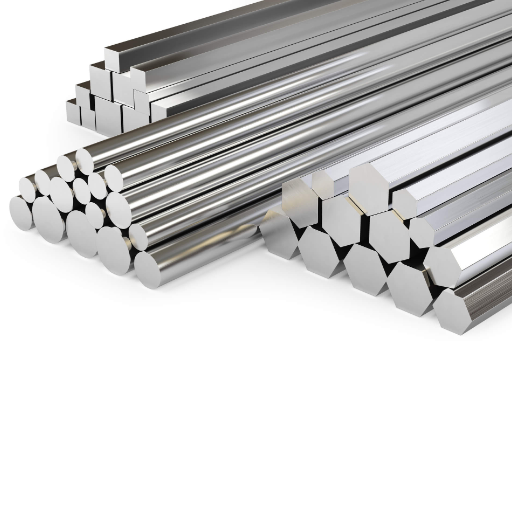
Tensile Strength and Hardness
Because 4140 alloy steel possesses tensile strength and hardness, it finds application in situations where high stresses are involved. The tensile strength of 4140 steel usually ranges from 95,000 psi (655 MPa) to 180,000 psi (1,240 MPa), depending on heat treatment conditions. The quenching and tempering heat treatments will influence the tensile properties. For instance, the lower temperature quenching and tempering result in increased hardness and strength, but at the expense of ductility. Hence, with such a heat treatment option, the material could be tailored to suit the specific requirements of an industry facing mechanical loads.
The hardness for 4140 alloy steel generally refers to the Rockwell C scale and varies according to its processing. Annealed 4140 steel has a hardness of about 197 HB (Brinell Hardness), but after quenching and tempering, the hardness can climb above 60 HRC. Such hardness never proves detrimental in applications such as gears, shafts, or components exposed to wear and abrasion. The satisfactory balance between hardness and toughness also prevents the possibility of brittle failure, which is important for components undergoing dynamic or cyclic loads.
The presence of alloying elements, primarily chromium, molybdenum, and manganese, in 4140 steel enables the maintenance of mechanical properties over a wide temperature range. Chromium improves hardness penetration, and wear resistance; molybdenum increases strength and hardenability. These properties render the steel useful in the various industries for automotive production, tooling, and machine making. With an optimum combination of tensile strength and hardness, 4140 alloy steel basically shows that it resists complex operational stresses without loss of structural integrity.
Impact Resistance and Ductility
4140 alloy steel has very high values of impact resistance and ductility, and hence is classified among the most reliable materials for very demanding applications. Impact resistance refers to a steel’s ability to absorb energy with slight or no deformation and resist fracturing when subjected to sudden forces, and hence impact. This is due to the composition of balanced carbon, chromium, and molybdenum, which lends the steel its tough character. The toughness of the material complements its ductility, meaning its ability to undergo plastic deformation in chewing go with tensile stress without breaking. In high dynamic force industries, these attributes come into play when the components are subjected to intense stress and/or shock loading. From a technical perspective, the CHARPY V-NOTCH test helps to quantify the impact resistance of 4140 steel by measuring the energy absorbed during fracture.
The Charpy V-Notch (CVN) values for 4140 are remarkable, especially when the steel is oil-quenched and tempered. Heat-treated 4140 steel, with higher impact resistance and ductility, is generally used for manufacturing heavy-duty parts, such as drive shafts, gears, and crankshafts. This allows 4140 steel to stand the test of time in constructive equipment and high-performance machinery areas where the material quality is very high.
The excellent ductility also makes steel amenable to machining and other forming operations into complex shapes without ruling out any compromise in mechanical integrity. In applications involving intricate machining, this can be almost a boon; aerospace parts or custom-engineered structures are obvious examples. Moreover, this material is greatly ductile across a wider temperature gamut, thereby preserving its structural properties in both cryogenic and elevated-temperature conditions. Alloy 4140 steel, having this balanced combination of impact resistance and ductility, makes an extremely versatile material suitable for technically demanding applications where reliability and performance are non-negotiable.
Comparison with Other Alloy Steels
The 4140 alloy steel is emphasized with 4130, 1045, 8620, and 4340 steels because some unique attributes of these steels, like composition, strength, hardness, toughness, weldability, and where they can be applied, are discussed.
|
Aspect |
4140 |
4130 |
1045 |
8620 |
4340 |
|---|---|---|---|---|---|
|
C Content |
0.38-0.43% |
0.28-0.33% |
0.43-0.50% |
0.18-0.23% |
0.38-0.43% |
|
Cr Level |
0.80-1.10% |
0.80-1.10% |
None |
0.40-0.60% |
0.70-0.90% |
|
Mo Add |
0.15-0.25% |
0.15-0.25% |
None |
0.15-0.25% |
0.20-0.30% |
|
Durability |
High |
Moderate |
Moderate |
Moderate |
Very High |
|
Rigidity |
High |
Moderate |
Low |
Moderate |
Very High |
|
Resilience |
Good |
Better |
Low |
High |
Excellent |
|
Joinability |
Moderate |
High |
High |
Moderate |
Low |
|
Usage |
Gears, shafts |
Tubing, mounts |
Machine parts |
Gears, fasteners |
Aircraft parts |
Heat Treatment Processes for 4140 Steel
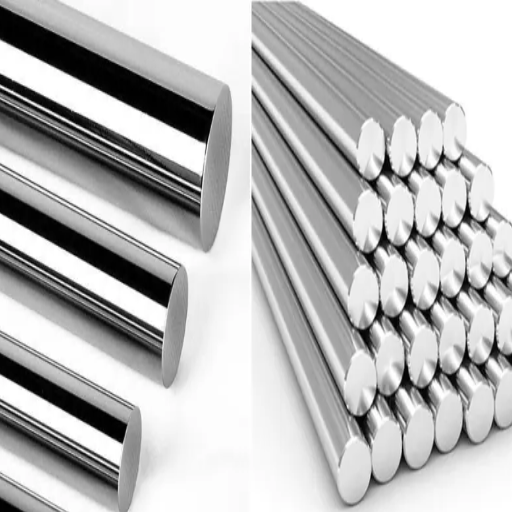
Harden and Temper Procedures
The hardening and tempering treatments constitute the very processes that impart mechanical synergy to steel 4140 for demanding applications. The hardening begins at an upward heating above the austenitizing temperature, generally in the range of 1500°F to 1550°F (815°C to 845°C). Here, the austenite formation in the steel allows it to undergo rapid cooling. Water, oil, or air is used for quenching, depending on the hardness required, and assuring no distortion or cracking is encountered. Good quenching produces a martensitic structure, and this alone gives the steel plenty of hardness and strength.
Tempering, afterward, is done to reduce brittleness somewhat and finely tune the mechanical properties. The steel that has undergone quenching is reheated to an appropriate temperature within the range of 400°F to 1200°F (200°C to 650°C), depending upon the targeted levels of toughness and tensile strength. Lower tempering temperatures retain a higher hardness, while higher tempering temperatures are associated with ductility and strength. Accurate measurement of temperatures during tempering and even heating control is required to achieve the desired service characteristics associated with various industrial applications.
These hardening and tempering treatments allow 4140 steel to achieve a satisfactorily balanced profile of mechanical properties (mainly high strength, excellent wear resistance, and good impact resilience), thus marking it as a choice among components such as gears, shafts, and structural elements that come under dynamic loading.
Annealing for Enhanced Properties
Annealing is a heat treatment that heats a material to the required temperature, maintains it for a given period, and then allows it to cool down slowly, usually in a furnace. This procedure is normally employed for alterations in the microstructure of the material, stress relief, and to improve ductility and machinability. For 4140 grade steel, annealing is of special importance because it produces a relatively soft state that is amenable to machining and, at the same time, helps in maintaining dimensional stability in the ensuing processes.
Climate-controlled annealing typically involves heating between 1,550°F and 1,650°F (843°C to 899°C), depending on the alloying elements present and the desired mechanical properties. The extended soaking time at this level allows the steel’s internal structure to become as homogeneous and uniform as possible. Slow and controlled cooling is achieved by means of switching off the furnace, thus avoiding placing the material in a highly thermal gradient environment that would otherwise result in distortion or cracking.
It is during the annealing processes that hardening takes place along with enhancement of the steel’s resistance to abrasion and elongation properties, thus easing the formation of complicated geometries. This step is most important whenever precise machining or cold working is needed before other treatments or finishing through processes such as hardening or surface finishing. Annealing, when done right, will allow the steel to remain as flexible as possible so that it can be depended upon to perform in the most demanding industrial applications.
Effects of Heat Treatment on Performance
The heat treatment of metals is vital in imparting mechanical and physical characteristics to meet particular performance requirements. The heat treatment involves heating or cooling cycles under strict control, which lead to changes in the material’s microstructure and thereby bestow upon it mechanical properties, such as hardness, tensile strength, and flexural strength, together with corrosion resistance, depending on the type of heat treatment being applied. Some of the effects heat treatment has upon material performance are as follows:
- Increased Hardness: Heat treatments, like quenching and tempering, can produce a higher degree of hardness in metals. For example, steel through quenching would obtain hardness values exceeding 60 HRC (Rockwell Hardness C), which is excellent for wear-resistant applications such as cutting tools or machine parts.
- Increased Tensile Strength: Processes such as normalization or austempering considerably increase tensile strength so that the metals can bear heavier loads. For example, tensile strength can increase by about 40% in carbon steel, varying with composition and the heat treatment process used.
- More Ductility: Annealing processes improve ductility by refining the grain structure. This refinement emboldens metals to deform without cracking and is essential during forming if serious shape adjustment is required.
- Reduction in Residual Stresses: A stress-relief anneal will eliminate or greatly reduce residual stress from previous manufacturing processes such as welding or machining. This reduction in stress leads to distortion during further work and use of the component.
- Improved Corrosion Resistance: Heat treatments such as solution annealing and aging can enhance resistance against environmental degradation, particularly for alloy systems like stainless steels. Solution-treated austenitic stainless steels show better corrosion resistance on account of the redistribution of alloying elements such as chromium and nickel.
Under these variations realized with intricate heat treatment, materials can be specifically tailored to withstand given applications in a variety of industries such as aerospace, automotive, and heavy equipment.
Physical and Thermal Properties
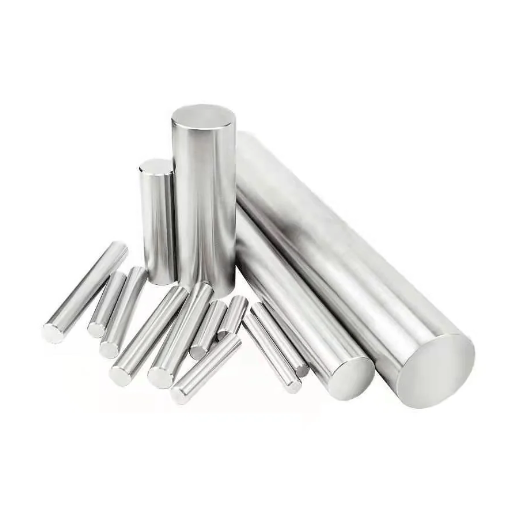
Thermal Conductivity and Expansion
Thermal conductive capability is an essential property that defines the rate at which heat is dissipated through a substance. From 10 to 30 W/m·K is the venue of thermal conductivity in austenitic stainless steels, depending on the specific alloying elements and temperature. The relatively low thermal conductivity, if compared to metals like aluminum and copper, thus bars stainless steel from being a good absorptive material requiring thermal resistance.
Thermal expansion, conversely, is the tendency of a substance to expand with heating. Usually, austenitic stainless steels have a coefficient of thermal expansion (CTE) of between 15 and 20 x 10⁻⁶/°C, which is higher than many ferritic steels. This property comes under consideration where dimensional stability is crucial, especially in those applications with variable ambient temperature. Advanced engineering designs often accept these properties in their decision process to shed thermal stresses and avoid mechanical deformations during operation.
Using knowledge of these thermal peculiarities, industries would stand better positioned to improve material performance in severe applications such as heat exchangers, furnace components, and cryogenic systems.
Density and Specific Heat
Density and specific heat capacity represent primary thermophysical properties that play an essential role in the choice of materials and the design of thermal systems. Density, commonly expressed in kg/m³, stands for the net quantity of mass for a unit volume that an object occupies, thereby affecting strength, buoyancy, and thermal mass. Metals such as aluminum have a rather low density of around 2,700 kg/m³ compared to steel densities of 7,850 kg/m³, which facilitates their use in lightweight applications.
Specific heat capacity refers to the amount of heat energy per unit mass needed to raise the temperature of that material by one degree Celsius, making the units for the property J/kg·K. Specific heat materials with a very high heat capacity, such as water (4,186 J/kg·K), can be used in thermal control systems because they absorb or release fairly large amounts of heat in the least amount of temperature change. In thermal energy storage, heat exchangers, and insulated containment systems, this property is important to allow energy transfer without acquiring or losing heat.
The term “low density” combined with “specific heat” describes the thermal response of a material’s spatial state and thus its application. For instance, low-density materials with high specific heat are good for lightweight thermal insulating applications, while high-density, high-specific-heat materials are good thermal buffers. With this knowledge, engineers can optimize for efficiency in appropriate contemporary fields, such as aerospace, energy systems, and industrial thermal management.
Corrosion Resistance Characteristics
It is one of the most prime properties a material can have in diverse applications that are subject to severe environments or chemical interactions, such as being exposed to periodic precipitation from acid rains. It refutes a surface corrosion associated with electrochemical reactions, the material being susceptible to adsorptions from oxygen, moisture, or salts. Depending onthe composition itself, corrosion resistance can be altered with protective coats or based on environmental conditions such as temperature and pH.
For example, stainless steel obtains its corrosion resistance via a passive chromium oxide film that is spontaneously grown on its surface to protect it from oxidation. Other types of corrosion resistance provided by high-performance alloys like titanium or nickel-base alloys guarantee chemical stability even in the most acidic or saline environments. The application of surface technologies such as anodizing or polymeric coatings adds a further layer to this resistance by curtailing direct contact with corrosive agents.
Corrosion rate (in mm/year), for example, gives engineers the numerical means to specify how well a given material would behave in specified conditions. Applying such knowledge allows industries like marine engineering, chemical processing, and energy infrastructure to choose materials best suited for great durability and reliability in their applications.
Applications of 4140 Alloy Steel
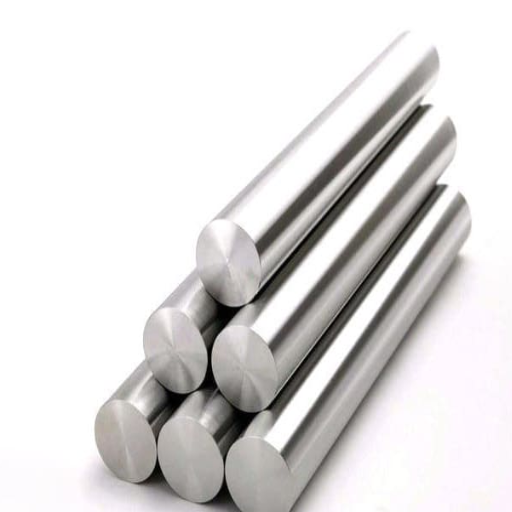
Uses in the Automotive Industry
4140 is an excellent choice for application in such a very demanding field as the automotive industry, owing to its considerable strength, heat resistance, and machinability. Mechanical properties and versatility make it suitable for many critical applications in the automobile industry. The 4140 alloy steel finds its best application in the following five areas:
- Crankshafts: The high tensile strength and fatigue resistance offered by 4140 alloy steel allow it to provide crankshafts of excellent quality. These crankshafts are subjected to enormous torsional stresses on torsion and must operate smoothly for long durations.
- Connecting Rods: Given its toughness and wear resistance, 4140 alloy steel is utilized to confer the performance desired on the connecting rods, to link pistons to the crankshaft, and transmit motion in internal combustion engines.
- Axle Shafts: 4140 alloy steel is widely selected for the manufacture of axle shafts as it can withstand very high bending and torsional loads. The application demands very high durability levels when subjected to variable conditions of load.
- Gear Components: The material is extensively used for making gears due to its excellent hardenability and wear resistance. These components are always under friction and require enormous durability to stay efficient and produce low-level noise.
- Drive Shafts: Transmission of torque and rotation is carried out by drive shafts that realize the balance of strength, impact-resistance, and machinability of 4140 alloy steel in smooth operation and transfer of power from one system to another.
Such a characteristic as being heat treatable endows 4140 alloy steel with adaptability in its mechanical properties for automotive engineering needs.
Applications in Aerospace Engineering
Materials are crucial in aerospace engineering. Nowadays, 4140 alloy steel is sold per box, principally due to its strength, toughness, ability to endure high stresses, and extreme temperature conditions. This alloy has gained favour over others due to the mechanical properties it provides to extremely critical components. Let’s go over five instances where 4140 alloy steel finds specific application in the aerospace industry:
- Landing Gear Components: 4140 alloy steel, with its impressive tensile strength and fatigue resistance, was specially chosen for landing gear components that must withstand repeated stresses during takeoffs and landings. The alloy also allows heat treatment so that it can exhibit the best performance under varying loading conditions.
- Aircraft Engine Mounts: Because engine mounts require materials with a high strength relative to weight ratio and good vibration-damping properties, 4140 alloy steel meets the requirement to preserve engine stability and safety during operational stresses.
- Structural Airframe Parts: In impact resistance and hardness, structural airframe components stand to gain from the alloy. These two qualities translate to durability and reliability, especially in the critical stress points of the structure of an aircraft.
- Rotor shafts and transmission components: Helicopter rotor shafts and transmission elements count on the excellent machinability and precise heat treatment of the 4140 alloy steel. This ensures smooth operation and resilience under rotational stresses and high torques.
- Fuselage Fasteners and Bolts: The precision and strength of 4140 alloy steel would make it an excellent material for fasteners and bolts used in assembling the fuselage. These fasteners and bolts must maintain structural integrity through charging and discharging against cyclic loading.
By making use of 4140 alloy steel, capable of withstanding the stringent environmental treatments inherent in an aerospace application, engineers can design performance-heavy and reliable systems to sustain current commercial aviation.
Manufacturing and Fabrication Uses
Because of the versatility of 4140 steel, it finds favor among manufacturers and fabricators requiring strength and flexibility. If properly heat-treated, 4140 steel will be easier to machine, and thus manufacturers can select the level of hardness and toughness best suited for their particular industrial requirements. The high torque generated under stress in gears, shafts, and axles demands little deformation, for which 4140 steel is chosen. Furthermore, 4140 steel finds application as a wear-resistant tool steel in dies and molds, where its wear resistance and impact tolerance assure longer operational life.
The usefulness is furthered with complex fabrication methods such as CNC machining and precision forging into highly demanding applications. For example, 4140 steel components in an automotive environment render reliability to a number of critical systems, including the drivetrain assemblies and structural reinforcement. Given appropriate preheating and postwelding treatment, the alloy is also a preferred option in the fabrication of large-scale frameworks and custom-engineered assemblies.
Automated processes with modern metallurgical improvements allow manufacturers to realize tighter tolerances with superior finishes when machining the steel. This precision is a key in the aerospace and energy industries, where failure is not an option. Integrating classical manufacturing techniques with newer methods will assure the industries of the best-performing 4140 steel in their high-grade trades, as well as being the most durable and cost-effective.
References
-
AZoM – AISI 4140 Alloy Steel (UNS G41400): This article provides a comprehensive overview of the composition, properties, and applications of AISI 4140 alloy steel, highlighting its fatigue strength and impact resistance.
-
ASTM Steel – SAE 4140 Steel: Comprehensive Guide and Insights: A detailed guide on SAE 4140 steel, covering its strength, toughness, and compliance with AISI/SAE standards.
-
Metal Supermarkets – Grade Guide: AISI 4140 Steel: This source discusses the hardenability and heat treatment processes of 4140 steel, making it ideal for various industrial applications.
Frequently Asked Questions (FAQ)
Q: What is the 4140 composition in terms of its key elements?
A: The 4140 composition typically includes 0.38 to 0.43% carbon, 0.90 to 1.20% chromium, and 0.15 to 0.25% molybdenum. This alloy steel is a low-alloy steel known for its strength and durability.
Q: How does the fabrication and heat treatment affect 4140 steel?
A: Fabrication and heat treatment significantly enhance the performance of 4140 steel. In the annealed condition, it is easier to work with, and post-weld heat treatment can further improve its mechanical properties, making it suitable for demanding environments.
Q: What are the physical properties of 4140 alloy steel?
A: The physical properties of 4140 alloy steel include high ductility, excellent fatigue strength, and torsional strength. This makes it ideal for applications requiring high strength, especially when subjected to heavy loads.
Q: Can 4140 composition affect its weldability?
A: Yes, the composition of 4140 can significantly impact its weldability. While it can be welded, preheating and post-weld heat treatment are often recommended to prevent cracking and ensure the integrity of the weld.
Q: How does 4140 compare to 8620 steel in terms of composition?
A: 4140 composition contains higher carbon and chromium content compared to 8620 steel, which has a lower carbon content and higher nickel. This difference affects their mechanical properties and suitability for various applications.
Q: What are the main applications of 4140 alloy steel?
A: The main applications of 4140 alloy steel include manufacturing machine components, gears, bolts, and automotive parts. Its excellent strength and durability make it suitable for use in high-stress environments.
Q: What is the significance of the heat-treated condition of 4140 steel?
A: The heat-treated condition of 4140 steel enhances its hardness and strength. This treatment allows the steel to achieve desired hardness levels, making it more effective in applications that require high performance and resistance to wear.
Q: What temperatures are involved in the fabrication and heat treatment of 4140 steel?
A: Fabrication and heat treatment of 4140 steel typically occur at temperatures ranging from 205 to 649°C (400 to 1200°F). These processes are crucial for achieving the optimal mechanical properties of the alloy.
Q: What key characteristics make 4140 steel suitable for heavy loads?
A: Key characteristics that make 4140 steel suitable for heavy loads include its high tensile strength, excellent fatigue resistance, and ability to withstand torsional stress, making it ideal for demanding mechanical applications.

